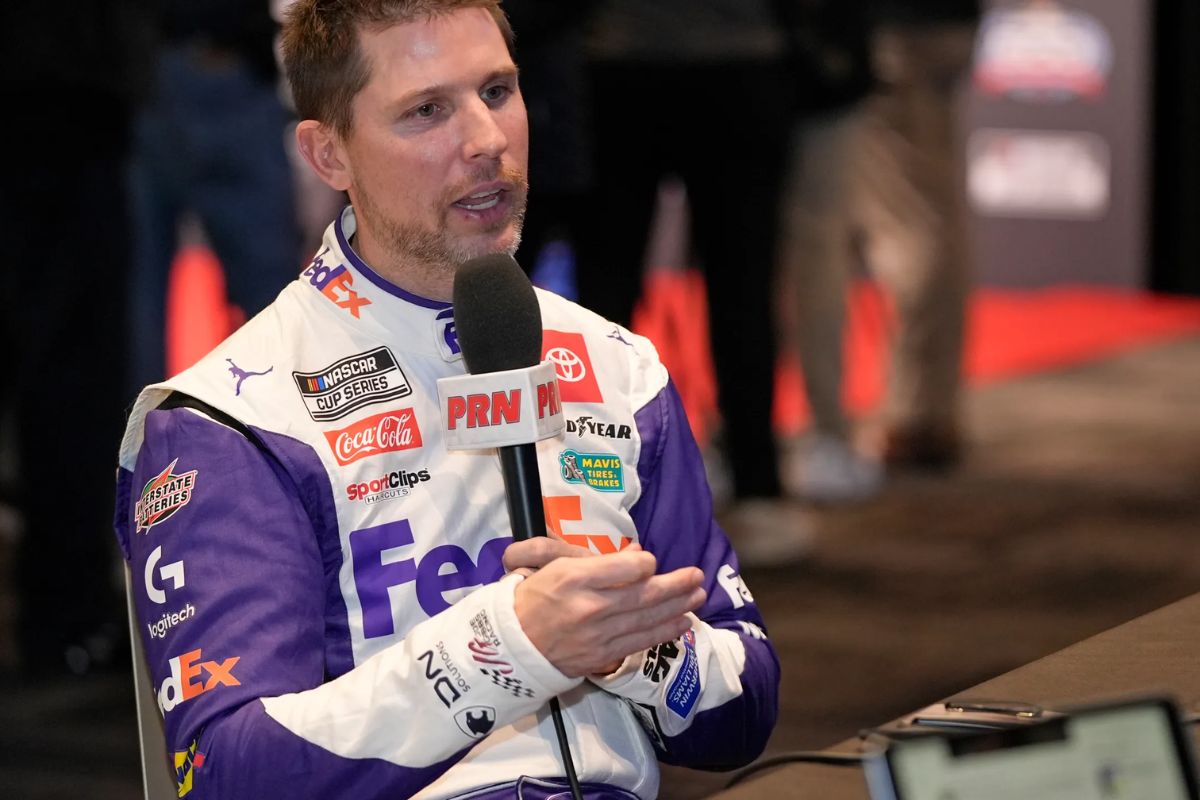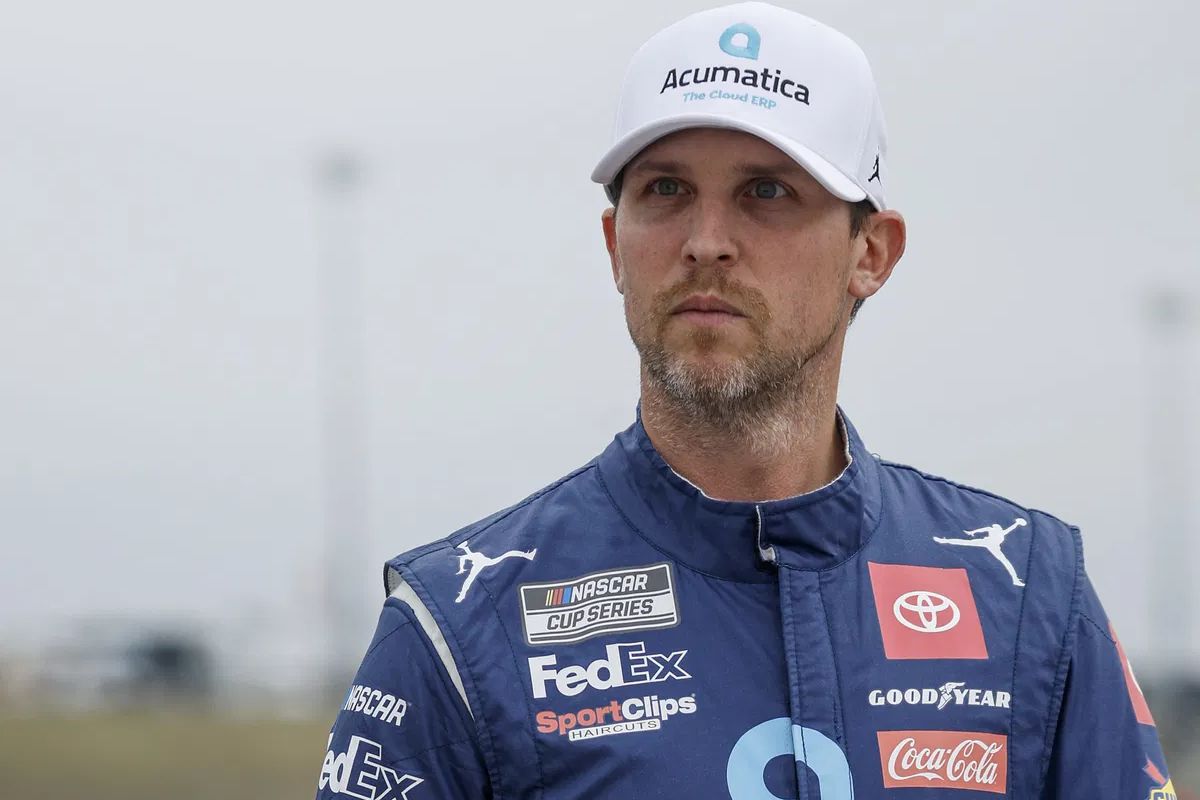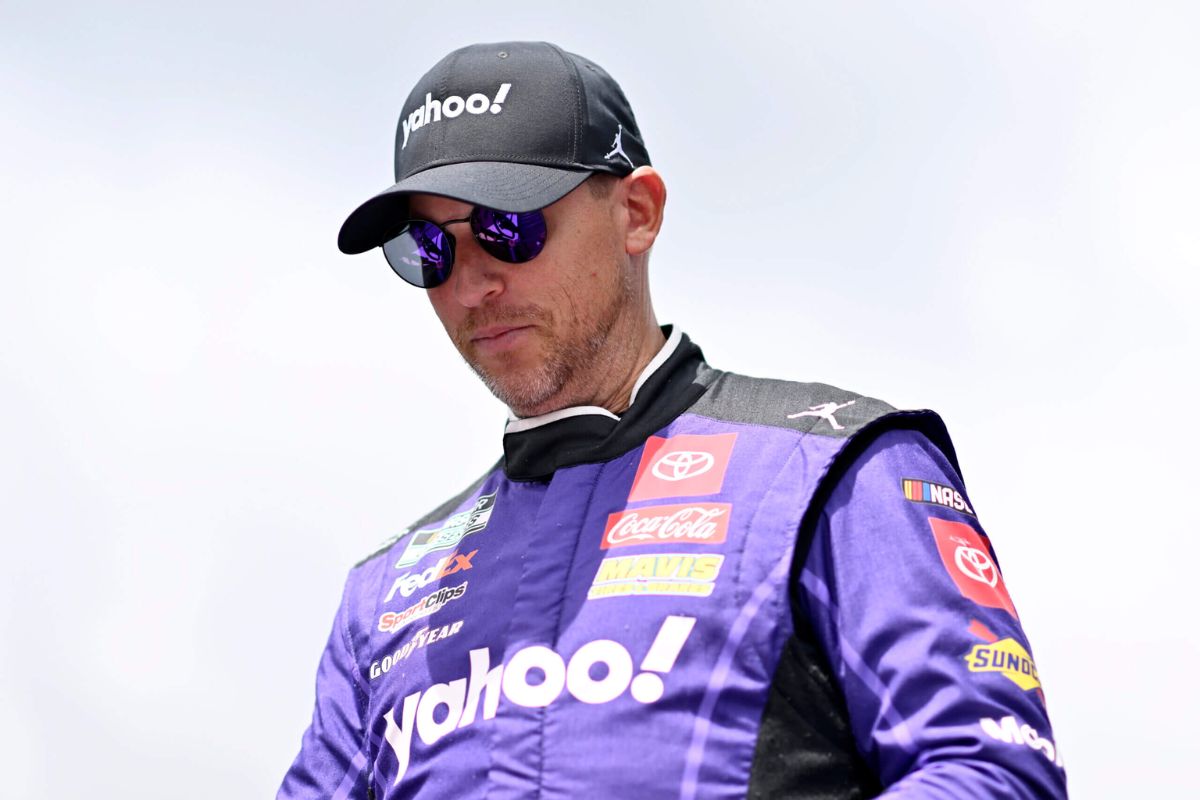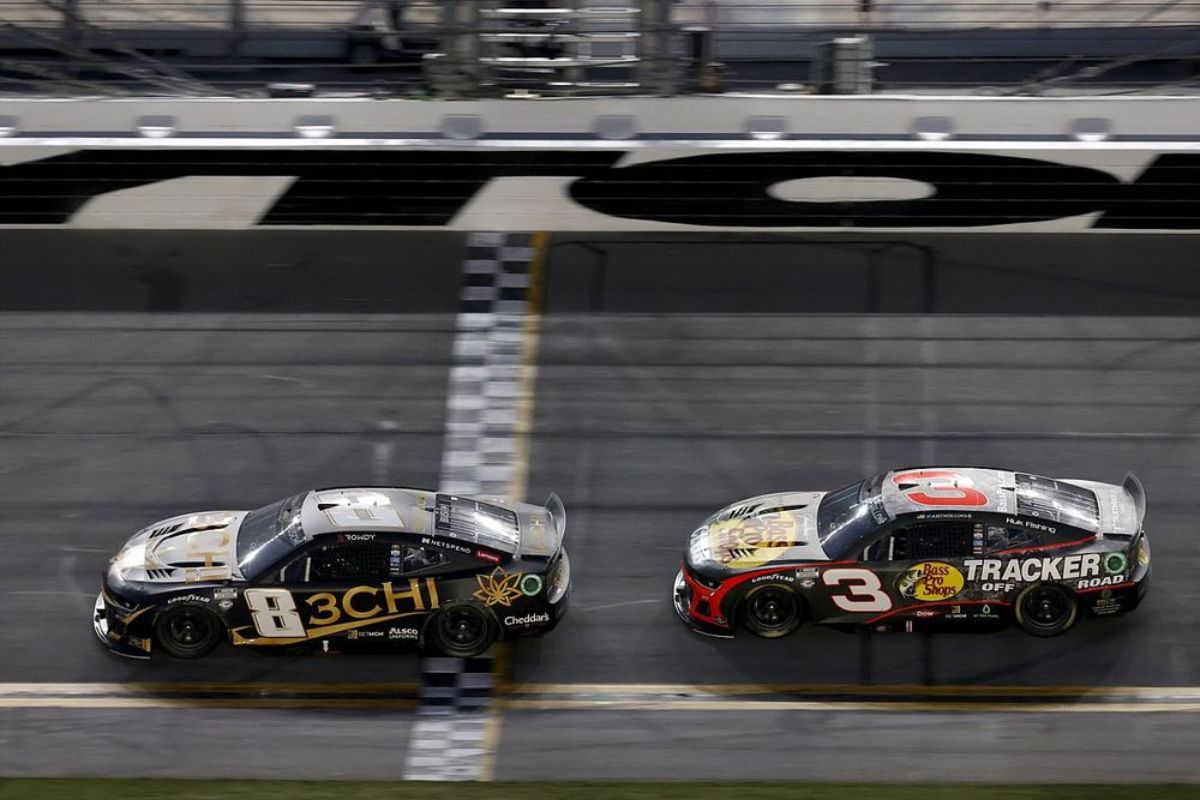Denny Hamlin Blames Corey LaJoie for Daytona Wreck: Denny Hamlin‘s recent comments regarding the Daytona incident have opened a complex dialogue about accountability within NASCAR, particularly as he pointed fingers at Corey LaJoie before later shifting focus to fuel-saving tactics. This seemingly contradictory stance highlights the multifaceted nature of racing dynamics, where individual actions can precipitate widespread consequences. As drivers grapple with the mental pressures of competition, the implications of Hamlin’s remarks resonate far beyond the track. The ensuing debate raises critical questions about the balance between personal responsibility and tactical maneuvering in a sport defined by speed and unpredictability.
Key Highlights
- Denny Hamlin initially blamed Corey LaJoie for the multi-car wreck but later shifted focus to fuel-saving tactics in racing.
- The Daytona incident involved 16 drivers, igniting a blame game and confusion among racers regarding accountability.
- Hamlin’s contradictory statements reflect the complexities of NASCAR racing dynamics and the pressures drivers face during the events.
- Fuel-saving strategies, while necessary, are causing concerns about diminishing excitement and competitive nature in superspeedway races.
- Corey LaJoie’s motivation for standout performances intensifies as he aims for postseason qualification following the controversial Daytona incident.
Initial Wreck and Denny Hamlin’s Reaction
The initial wreck during the Coke Zero Sugar 400 served as a pivotal moment, dramatically altering the dynamics of the race and igniting a whirlwind of emotions among the drivers. As the race progressed into its following stage, a massive collision unfolded, ensnaring several competitors, including Denny Hamlin’s No. 11 Toyota. This incident not only reshaped the competitive landscape but also raised questions regarding responsibility and accountability on the track.
In the aftermath of the wreck, Hamlin’s reaction was one of bewilderment. He emerged from the infield care center with a sense of uncertainty, stating, “I’m not really sure,” a reflection of the confusion that many drivers faced in the chaotic aftermath. The crowd’s consensus quickly gravitated toward blaming Corey LaJoie, yet Hamlin’s initial instinct appeared to be one of indecision.
It is significant that this doubt shifted into alignment with the prevailing narrative, as he ultimately sided with the spectators in attributing fault. This duality in Hamlin’s response exemplifies the complexities of race dynamics and the psychological pressures drivers face in high-stakes environments.
In racing, emotions run high, and perceptions can shift rapidly, influenced by both the immediate context and the broader public sentiment. Hamlin’s experience highlights the intricate interplay between personal judgment and external expectations, revealing how a single incident can reverberate throughout the sport, complicating relationships and narratives in the ever-competitive world of NASCAR.
Hamlin’s Contradictory Statements
Multiple statements from Denny Hamlin following the Daytona race demonstrate a troubling inconsistency in his perspective on the events that transpired. Initially, Hamlin seemed to attribute blame for the massive wreck, which involved 16 drivers, to the actions of Corey LaJoie, suggesting that LaJoie’s aggressive maneuvering was a catalyst for the chaos.
However, in subsequent interviews, Hamlin pivoted to discuss the broader implications of fuel-saving tactics prevalent in superspeedway racing, implying that the very nature of the competition contributed to the volatility of the race.
This contradictory stance raises critical questions about accountability in a sport where split-second decisions can lead to catastrophic outcomes. By focusing on LaJoie’s role, Hamlin sidesteps a more nuanced understanding of the racing environment, characterized by drivers conserving fuel while jockeying for position.
His statements reflect a reluctance to confront the complex dynamics at play, where tactical driving can lead to an increased likelihood of accidents as tensions mount in the race’s closing laps.
Moreover, Hamlin’s oscillation between blaming an individual driver and critiquing the overarching race tactics highlights a disconnect in his reasoning. It suggests an attempt to simplify a multifaceted situation into a more palatable narrative.
Hamlin’s Blame on Fuel-Saving and LaJoie
In the aftermath of the Daytona race, Denny Hamlin‘s commentary reflects a complex interplay between individual actions and broader racing tactics. Initially, he attributed the chaos to the tactical maneuvering surrounding fuel-saving, which introduced a nuanced layer to the drivers’ behavior.
Hamlin noted that during the following stage, “some fuel-saving [was] going on,” enabling certain competitors to adopt a more aggressive stance as they aimed for advantageous track positioning. This observation emphasizes how tactical decisions impact race dynamics, often resulting in unintended consequences.
“But in the second stage, there’s definitely some fuel-saving going on, which allowed some cars to be more aggressive, I guess because they wanna get some rack position. I think it was just a combination of some people who didn’t wanna go and some people who did. You know, obviously, I was wrecked,” – hamlin
Denny Hamlin says he thinks it was a byproduct of some wanting to go and others wanting to ride
How does he respond to all this adversity
"Go try to win a race next week." pic.twitter.com/205OSeQMDN
— Matt Weaver (@MattWeaverRA) August 25, 2024
However, Hamlin’s narrative quickly shifted when he pointedly placed blame on Corey LaJoie, stating, “7 caused it,” a reference to LaJoie’s involvement in the wreck. His immediate reaction suggested a frustration borne out of witnessing LaJoie’s car being turned in front of him.
Denny Hamlin on the “Big One” earlier… https://t.co/GkvueZzxpH
— Austin Konenski (@AustinKonenski) August 25, 2024
The duality in his statements highlights a common tension in racing: the fine line between personal accountability and the collective influence of racing tactics.
In the aftermath of the incident, Hamlin’s recollection of events revealed a layered understanding of the race’s complexities. While he initially focused on tactical elements like fuel-saving, which can lead to aggressive driving behavior, he ultimately zeroed in on LaJoie’s actions as a catalyst for the crash.
LaJoie’s Motivation and Postseason Context
With the postseason looming, Corey LaJoie’s motivations have intensified as he approaches the final opportunities to solidify his standing in the Cup Series. As the next-to-last race of the regular season unfolds, LaJoie finds himself at a critical juncture, not just for personal achievement but also for his team, Spire Motorsports.
The urgency of the moment compels LaJoie to deliver standout performances, particularly in the wake of the Coke Zero debacle, which has sparked controversy and examination. LaJoie’s push for excellence is emphasized by the knowledge that the upcoming Cook Out Southern 500 will mark the final chance for drivers to secure their place among the 16-man postseason field.
This race presents a unique blend of pressure and opportunity, prompting LaJoie to execute tactical maneuvers that could improve his reputation and potentially secure a future with another team. His desire to leave a lasting impression on Spire Motorsports, as he bids farewell, adds an emotional layer to his motivation.
However, LaJoie’s situation is further complicated by external factors, including Denny Hamlin’s blame game surrounding the Daytona incident. While LaJoie’s actions have been examined, it is crucial to reflect on the broader context of the race dynamics and the shared responsibility among drivers.
Typical Daytona Issues and Fuel-Saving Concerns
Amid the high-stakes environment of Daytona racing, fuel-saving strategies have emerged as a vital component that can profoundly impact race outcomes.
As noted by Elton Sawyer, the dynamics of superspeedway racing have shifted, with an increasing emphasis on conserving fuel to maintain track position. This phenomenon has led to a series of typical Daytona issues that challenge the integrity of the sport.
“The Daytona 500 and superspeedway racing in general has kind of come down to that.” – Sawyer
Drivers often find themselves in slow-moving packs, sacrificing speed for fuel efficiency, which can detract from the competitive nature of the race. This scenario not only frustrates drivers like Kyle Busch, who expressed his disappointment at the lack of pace, but also raises questions about the essence of racing itself.
“I believe it’s a problem. The start of the race last weekend for the Daytona 500 – we’re all sitting around there running half-throttle; not passing and just riding in a line. I felt disgraceful, myself, being a race car driver – wanting to go fast, lead laps and win the Daytona 500, and that was our strategy that we had to employ at the start of the race because everybody was doing it.” – busch
The following aspects highlight the challenges posed by fuel-saving tactics during Daytona events:
- Aerodynamic Compromise: Bunched-up racing diminishes the aerodynamic advantages that define Daytona.
- Strategic Stagnation: Drivers are forced to adopt fuel-saving strategies, limiting overtaking opportunities and excitement.
- Race Integrity: The shift towards fuel conservation may undermine the competitive spirit inherent in racing.
- Fan Experience: Spectators may find the reduced action disappointing, questioning the allure of such races.
News in Brief: Denny Hamlin Blames Corey LaJoie for Daytona Wreck
The controversy surrounding Denny Hamlin’s comments following the Daytona incident reveals the intricate dynamics of accountability in NASCAR. The oscillation between blame and tactical considerations, particularly regarding fuel-saving tactics, highlights the psychological pressure drivers face in high-stakes environments. This situation not only ignites debates about individual responsibility but also reflects broader concerns about the competitive integrity of the sport. As racing strategies evolve, the implications for driver interactions and accountability will certainly continue to resonate within the community.
ALSO READ: Denny Hamlin’s Title Hopes in Jeopardy: Toyota’s Trust Crisis Threatens Championship




